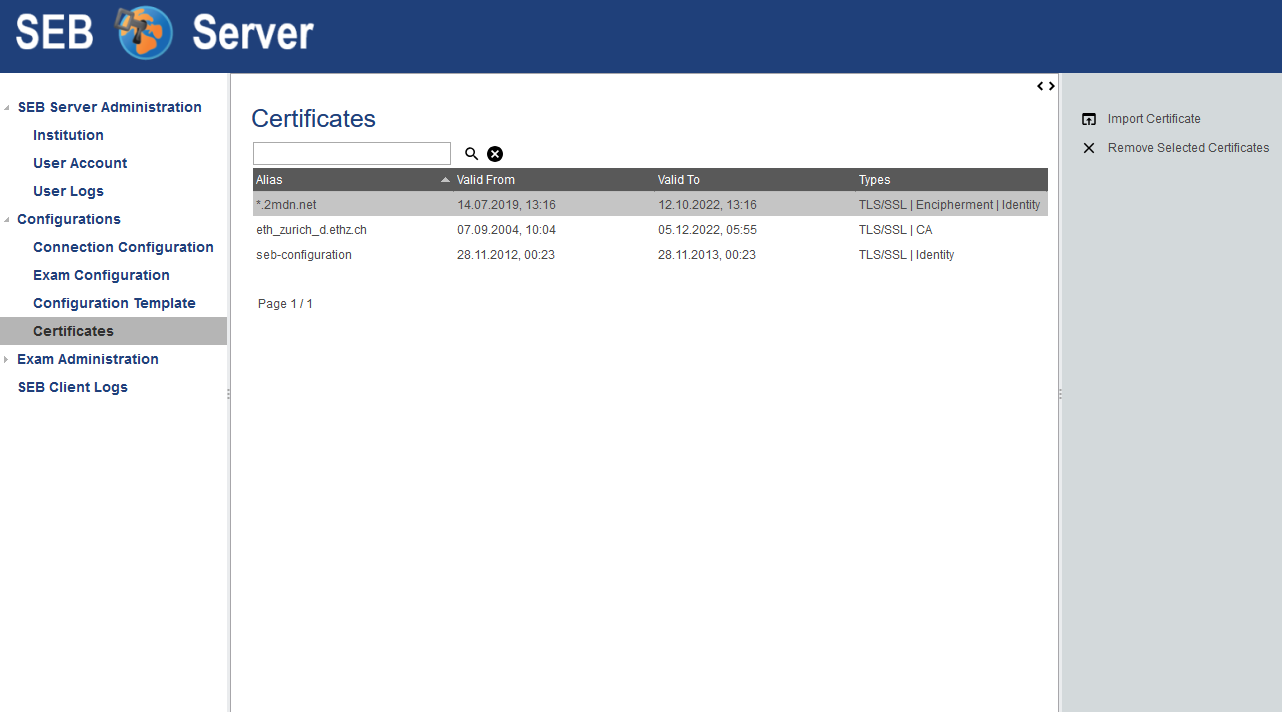Certificates
Overview
Import and store X.509 certificates within SEB Server is a new feature since SEB Server version 1.2. This allows an institutional administrator or an exam administrator to upload and store certificates for further use within SEB Server.
Note
Certificates uploaded to SEB Server are stored in a secured certificate-store that is stored within the data base rather than a usual file. The certificated store is password secured and only the binary data of the certificate store is placed into the database for security reasons.
Once a certificate has been uploaded to SEB Server it can be used for various other features of SEB Server where a certificate is needed. One feature that also comes with the SEB Server version 1.2 is the ability to encrypt a connection configuration with a certificate that has the right purpose (Identity) to do so. If you need this feature already, please have a look at: Connection Configuration. Other planed features are the import of certificate encrypted exam configurations as well as to embed certificates within an exam configuration to allow certificate pinning between SEB and LMS/Assessment Tool.
There is currently certificate upload support for two version of certificates:
PEM
This are usually non password protected certificates in different file-formats. SEB Server currently supports the following PEM file-formats:
.pem
.crt
.cer
PKCS12
This are usually password protected certificates in different file-formats. SEB Server currently supports the following PKCS12 file-formats:
.p12
.pfx

Use Cases
Upload a certificate
To upload and store a certificate of supported file type, please open the “SEB Configuration” section and select the “Certificates” page
You will see the list of known certificates from the SEB Server like in the picture above.
Choose “Import Certificate” from the right action pane and the upload dialog will open.
Within the upload dialog, select the certificate file on your local machine that you want to upload.
If the certificate is password protected, you will need to give the password to upload the certificate.
Click on “OK” to start the import.
If the import is successful, the imported certificate will show up in the list. Otherwise, SEB Server will display an error message with the reason of failure.
Remove / delete a certificate
To permanently delete a stored certificate on SEB Server, please open the “SEB Configuration” section and select the “Certificates” page
You will see the list of known certificates from the SEB Server like in the picture above.
Please select the certificate you want to remove.
Choose “Remove Selected Certificates” from the right action pane and a configuration dialog will appear.
If you are sure to delete the selected certificate(s), click on “OK” to delete.
The deleted certificates disappear form the certificates list.